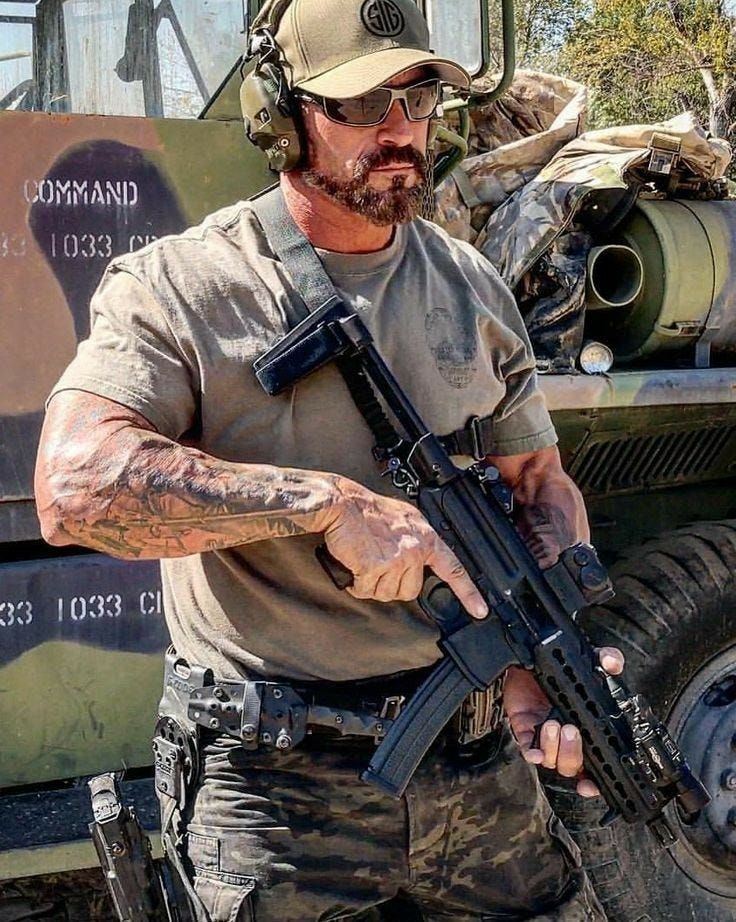Before we proceed, we need to reiterate that this series covers hypothetical or fictional circumstances. More than that, I personally do not advocate—as I am on record saying many times since 2008—any form of violence. (I am a Christian and I adhere as well as I know how to principles of nonviolence.) In our hypothetical scenario, the purpose of these techniques and tactics is to protect lives and move people out of harm’s way. Underground railroads, if you will.
We are talking here about underground organization, not lone wolf stuff. This means, then, a system of relationships, albeit more defined and disciplined than normal relations. The construction and expansion of an underground organization requires recruitment, hierarchy, and strict rules of conduct. On the other hand, we are not talking about a military organization; and so, the recruitment process would—hypothetically—emphasize character traits and standards that are markedly different than the character traits and standards of military organizations, but with disciplinary standards that match or exceed the military. Because that discipline cannot and should not be crudely enforced by threat of punishment, assessment and selection of new membership must winnow out a particular kind of person who is self-disciplined, who internalizes the need for discipline out of deep commitment to the mission, if you will, of the organization. And because these kinds of tactics and techniques are often performed by single persons without direct supervision, assessment and selection must also be aimed at recruiting persons with the kind of integrity demanded by a quiet professional. By assessment and selection, we mean vetting.
The military wants healthy, aggressive, young people who don’t ask too many questions; and they imprint discipline upon them through a catechism of shock (that’s, frankly, a lot less shocking than it was in my day). Troops join the military for a variety of reasons, which include patriotism, job security, money for school, getting away from home life, pursuing some fantasy, family tradition, and so on. Many of them enjoy a good old alcoholic party. Our hypothetical organization wants persons whose commitment to the goals of the organization is already well-thought-through, realistic, and non-self-regarding. No glory seekers or fantasists. This is a results-oriented, not ego-driven practice. They may be in very different states of health, of all ages, and studiously non-confrontational. They cannot be habitually aggressive and they absolutely cannot be drunks, druggies, gambling addicts, sexually incontinent, etc. Something “our people” will need, like the military, is courage, but of a quieter, less-demonstrative kind. They need to be problem solvers with good judgement to accompany their initiative. They must not panic in emergencies. They must respond calmly to the unexpected. They must not be predisposed to paranoia. They must not fracture under pressure. Mature, selfless, sober.
Absolutely NOT an underground operator!!!
Yes!
Yes!
Yes!
Hell no!
Yes!
Yes!
Nooooooooo!
As to members, all must internalize The Main Rule: “The only way to keep a secret is not to tell anyone.” Compulsive talkers, there’s the door.
Given these standards, the best means of vetting is getting to know someone when they don’t realize they’re being vetted, or knowing them, or knowing someone whose judgement you trust who knows them. If someone comes to you, seeking membership, you need to disband and start over. You’ve been compromised, and you’re prospective enlistee is probably a government agent.
Every member is a recruiter, but to green light a recruitment, the decision must be referred up the hierarchy.
How to do all this will depend upon how you are organized. The object of the organization is to do “missions,” that is protect people, hide people, and move people. This is not possible—in an officially hostile environment—without secrecy, and compartmentalization is key to maintaining that security. Compartmentalization protects the organization, the persons in the organization, and the mission. This is why clandestine organizations in the past have employed a cellular structure. There are several kinds as internet research will show (use your VPN/Tor combo). Once one grasps the concept, there are creative ways to develop it.
What is compartmentalization?
Obviously, the start-up of an underground organization will be organized by a very few people who quite possibly know each other already. As the organization develops, all recruitment, training, and operations need to be organized on a strictly “need to know” basis. Lower echelons will only have access to the critical information necessary to carry out their portions of any operation, and not a drop more. Moreover, wherever possible and to the extent possible, the identities of other members must be known to the minimum number of people necessary. That’s why many underground groups use these cellular forms of organization.
If one cell falls, that failure isn’t passed through the organization; the damage is limited (compartmented) to the compromised cell. There can be three-person cells or five-person cells or whatever (keep them small), but each cell has a leader/contact who is known, albeit sometimes under an alias, and that leader/contact has sole contact with the next higher echelon, via a single person, also often under an alias. (In one organization in which I participated some years back, everyone operated under an alias.) Higher echelons may know the identities of lower echelon personnel, but lower echelons may not know the identities of higher with a single-contact exception. If you have an issue with hierarchies, don’t go into the underground organization business. Hierarchies are necessary for operational security and discipline, and for planning complex operations (which we’ll discuss later).
NEXT: Cut-outs.












